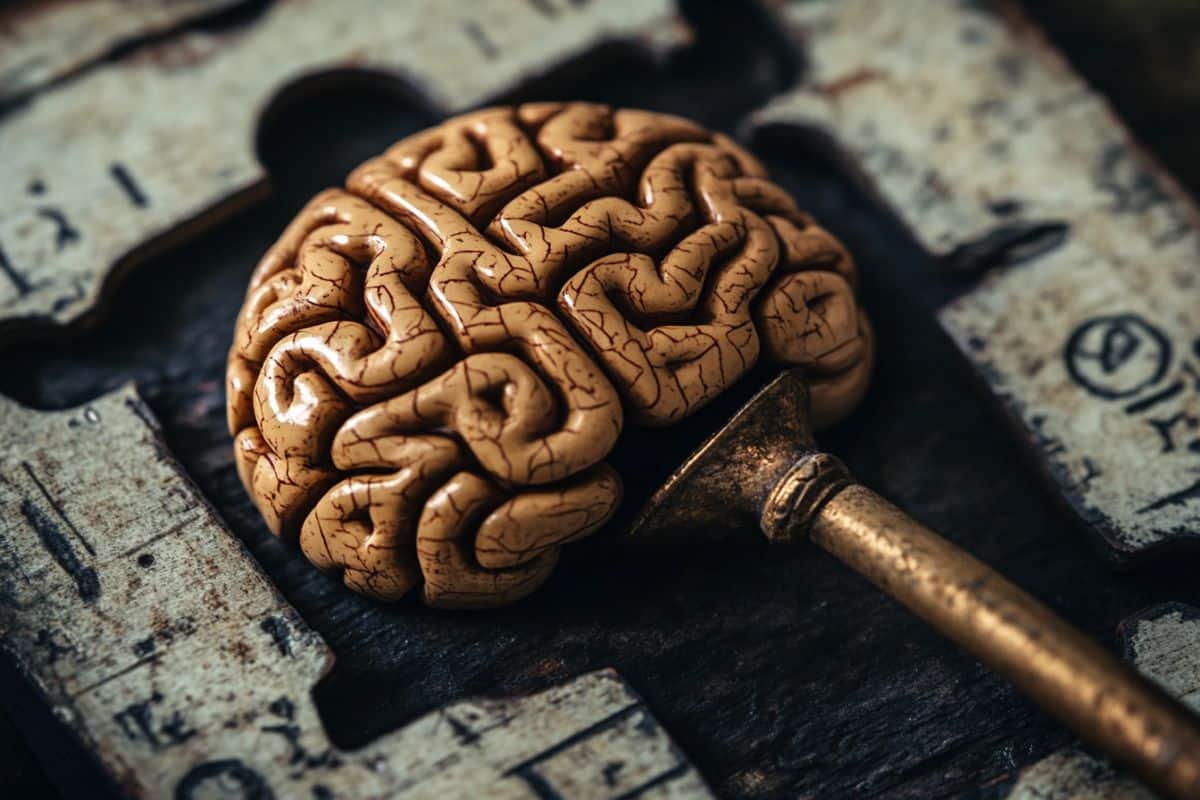Summary: A new study using intracranial recordings in humans reveals that the thalamus, particularly its higher-order regions, plays a central role in triggering conscious perception. By monitoring brain activity during a visual task, researchers found that the intralaminar and medial thalamic nuclei activated before the prefrontal cortex, suggesting the thalamus initiates conscious awareness.
This thalamus-to-cortex signal synchronization challenges the traditional view that cortical regions alone are the seat of perception. These findings deepen our understanding of how brain circuits give rise to consciousness and highlight a vital role for subcortical structures.
Key Facts:
- Early Activator: Intralaminar thalamic regions activate before the prefrontal cortex during perception.
- Signal Sync: Conscious perception coincides with synchronized thalamus–PFC activity.
- Thalamic Gateway: Findings support a gating role for the thalamus in driving conscious awareness.
Source: AAAS
Using direct, intracranial brain recordings in humans, a new study finds that the thalamus, a small region located deep within the brain, plays a pivotal role in conscious perception.
According to the authors, specific high-order thalamic regions act as a gateway to awareness by sending signals to the prefrontal cortex.
The findings shed new light on the mysteries of human consciousness.

Understanding the neural foundations of human consciousness is among the most challenging tasks in neuroscience.
Previous research has suggested that consciousness can be divided into two components: the conscious state (i.e., awake or asleep) and conscious content (i.e., specific experiences or perceptions).
While subcortical structures are primarily involved in regulating conscious states, many theories emphasize the importance of subcortical-cortical loops in conscious perception.
However, most studies on conscious perception have focused on the cerebral cortex, with relatively few studies examining the role of subcortical regions, particularly the thalamus. Its role in conscious perception has often been seen as merely facilitating sensory information.
To better understand the role of the thalamus in conscious perception, Zepeng Fang and colleagues performed a unique clinical experiment and simultaneously recorded stereoelectroencephalography (sEEG) activity in the intralaminar, medial, and ventral thalamic nuclei and prefrontal cortex (PFC), while five chronic, drug-resistant headache patients with implanted intracranial electrodes performed a novel visual consciousness task.
Feng et al. discovered that the intralaminar and medial thalamic nuclei exhibited earlier and stronger consciousness-related neural activity compared to the ventral nuclei and PFC.
Notably, the authors found that activity between the thalamus and PFC – especially the intraluminal thalamus – was synchronized during the onset of conscious perception, suggesting that this thalamic region plays a gating role in driving PFC activity during conscious perception.
About this consciousness and neuroscience research news
Author: Science Press Package Team
Source: AAAS
Contact: Science Press Package Team – AAAS
Image: The image is credited to Neuroscience News
Original Research: Closed access.
“Human high-order thalamic nuclei gate conscious perception through the thalamofrontal loop” by Hulin Zhao et al. Science
Abstract
Human high-order thalamic nuclei gate conscious perception through the thalamofrontal loop
INTRODUCTION
Exploring the neural substrates underlying human consciousness is one of the most exciting and challenging tasks in modern science. There are at least two distinct modes of consciousness: the conscious state (awake, asleep, and coma, etc.) and the conscious content (specific conscious experience). Human high-order thalamic nuclei activity is known to closely correlate with conscious states.
However, it is not clear how those thalamic nuclei and thalamocortical interactions directly contribute to the transient process (which occurs on a millisecond scale) of human conscious perception.
Whereas most studies have focused the search for the neural correlates of conscious perception on the cerebral cortex, relatively few studies have explored the functional role of subcortical structures, including high-order thalamic nuclei.
Recently it has been hypothesized that the high-order thalamic nuclei act as gates to modulate cortical activity during conscious perception; however, there is a lack of direct empirical evidence from human studies to support such argument.
RATIONALE
The thalamus has been conventionally assumed to act as a prerequisite of sensory information for conscious perception rather than directly contributing to it. However, this assumption has been challenged by novel theoretical hypothesis and empirical evidence, mostly from anatomy and neuroimaging studies, which have shown the direct involvement of the human thalamus in various cognitive functions.
Although several theories of consciousness have proposed that the thalamocortical loops might play a critical role in human conscious perception, it is largely unknown how consciousness-related information is processed and transferred within these loops.
Moreover, because there is great functional heterogeneity across thalamic nuclei, it is necessary to identify the respective roles of different thalamic nucleus in conscious perception.
However, precisely capturing neural activity with high spatial and temporal resolution in human thalamic nuclei and in thalamocortical loops is very difficult owing to technical restrictions.
Simultaneous intracranial recordings from human thalamic nuclei and thalamocortical loops provide an excellent opportunity to elucidate the dynamic process of thalamocortical loops during the emergence of conscious perception.
RESULTS
We simultaneously recorded stereoelectroencephalography (sEEG) data from multiple thalamic nuclei and prefrontal cortex (PFC) while patients were performing a novel visual consciousness task. In this task, the matched saccadic response between the conscious and unconscious conditions largely minimized the confusion of report-related activity with consciousness-related activity.
Compared with the ventral nuclei and PFC, the intralaminar and medial nuclei presented earlier and stronger consciousness-related activity, including both event-related potential (ERP) and event-related spectral perturbation (ERSP).
Transient thalamofrontal neural synchrony and cross-frequency coupling were both driven by the θ phase (2 to 8 Hz) of the activity in intralaminar and medial nuclei during the emergence of conscious perception.
The coupling between these two thalamic nuclei and lateral PFC (LPFC) was stronger than that between these nuclei and other PFC subregions during conscious perception.
Further decoding analysis of the stimulus-evoked activity in the intralaminar and medial nuclei and LPFC showed that the accuracy was highest when decoding conscious perception (conscious versus unconscious) compared with decoding other task-related events (such as stimulus contrast, rule cues, saccade direction, and saccade reaction time).
CONCLUSION
We provide direct sEEG evidence in the human brain that supports the gate role of the intralaminar and medial nuclei in the rapid process of conscious perception. More specifically, the intralaminar and medial nuclei play a more important role than the ventral nuclei during the emergence of conscious perception.
The interaction between the LPFC and intralaminar and medial nuclei, which originates from the intralaminar and medial nuclei, may play an essential role during conscious perception. Moreover, the stimulus-evoked activity in the thalamofrontal loop primarily encodes consciousness-related information rather than other task-relevant events.
These results support the argument that the intralaminar and medial thalamic nuclei play a gate role to modulate the activity of PFC during the emergence of conscious perception.







